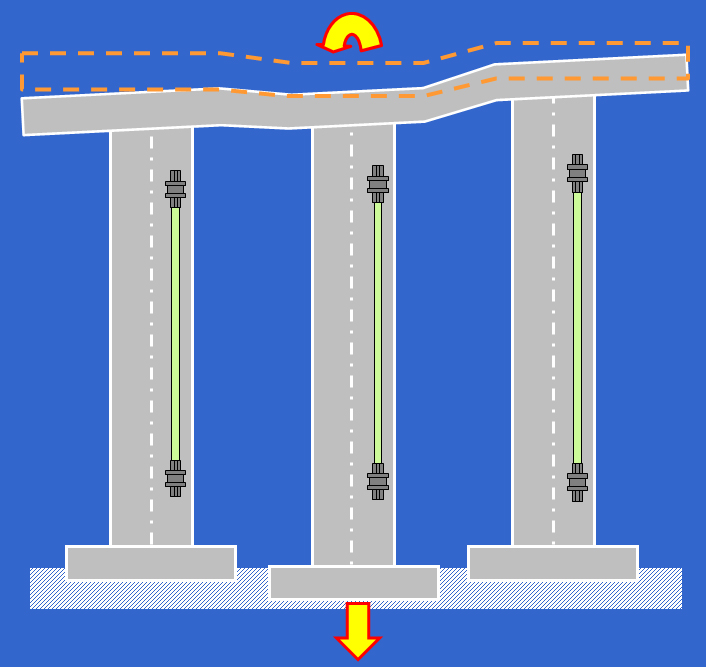
| Research Interests |
||
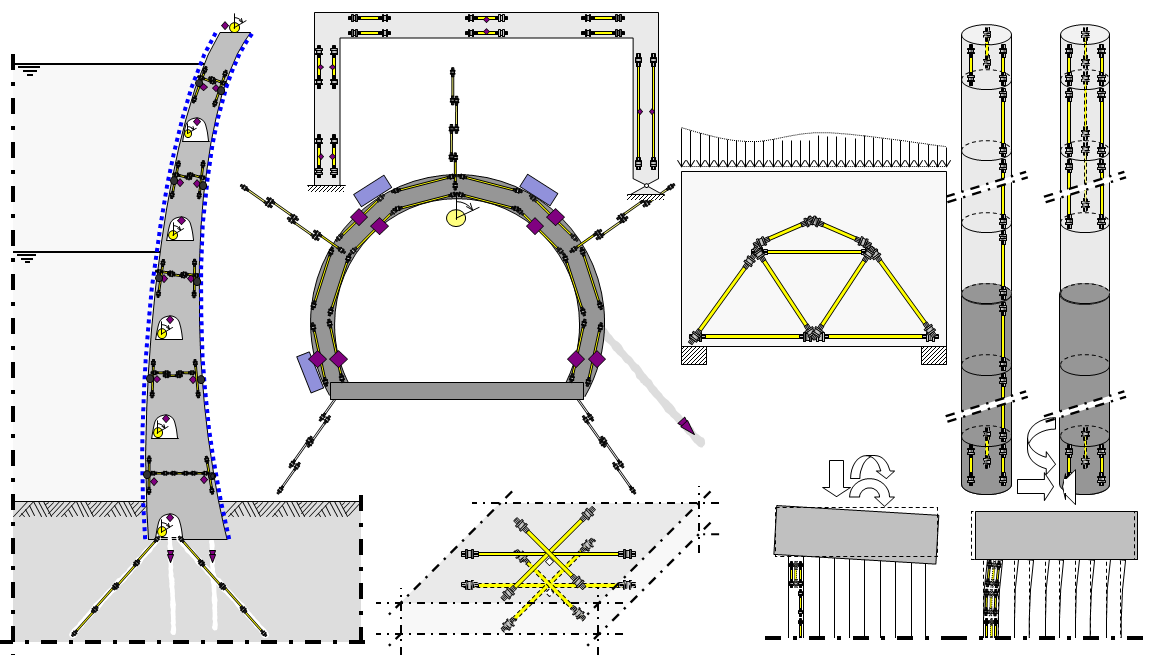 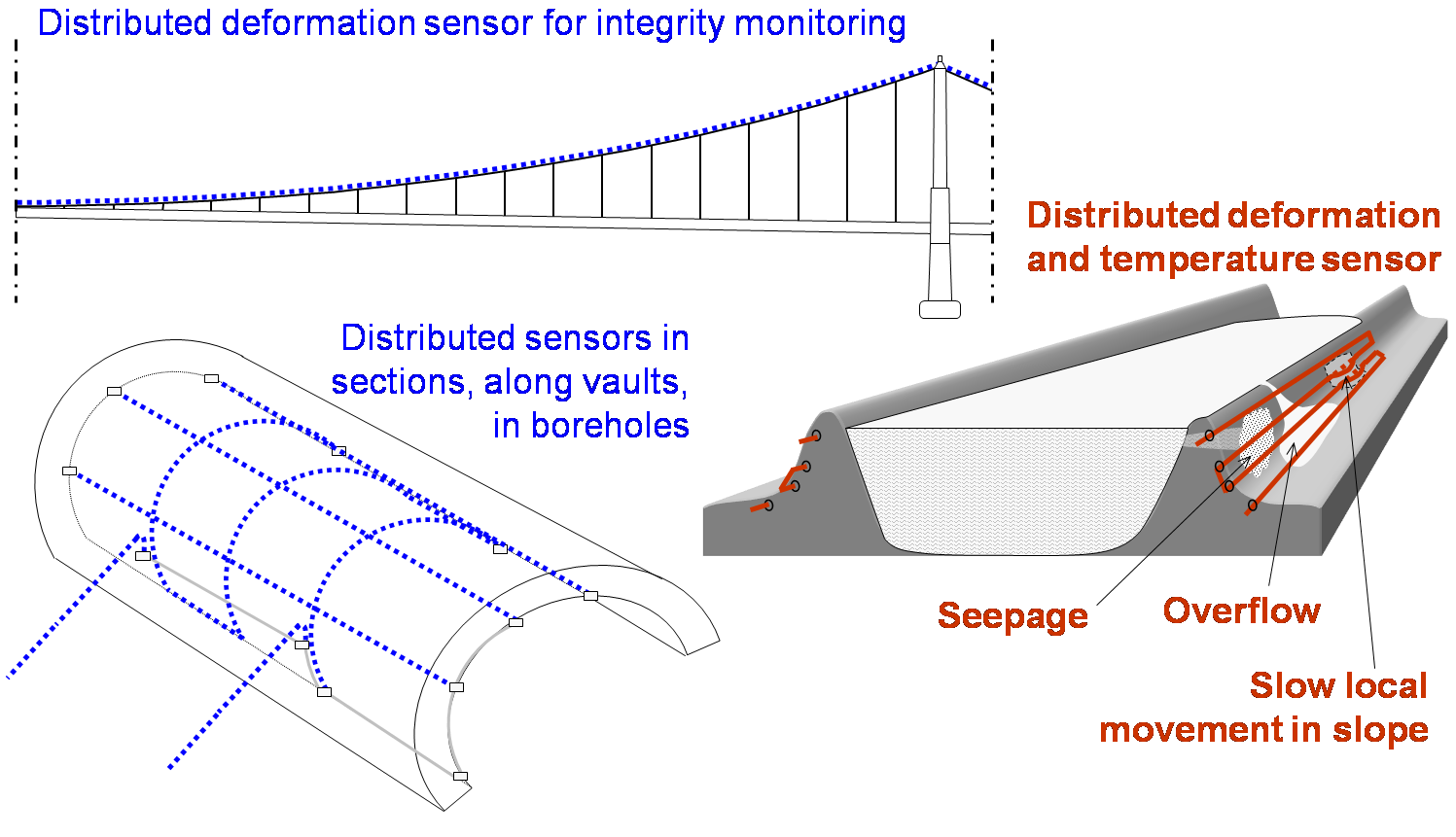 |
SHM METHODS AND STRATEGIES |
|
With reference to their spatial disposition, strain sensors are classified as discrete (point) sensors or as distributed (continuous) sensors. With respect to the gauge length, the discrete sensors are conventionally classified in two groups: short-gauge and long-gauge sensors. Depending on the chosen sensor type the monitoring is performed at local material, global structural, or global integrity level. The research at SHM lab deals with the following topics: interpretation of measurements depending on type of sensor, strain distribution, and construction material; design of monitoring strategies, design of sensor networks, and evaluation of their performance, depending on sensor type, monitoring requirements, existence of structural models (model-driven approach with sensor network based on structural analysis or model-free approach based on "random" distribution of sensors), and schedule of monitoring (static, dynamic, combined); evaluation of reliability in achieving the aims of monitoring. The following projects are related to above listed topics: Streicker Bridge Monitoring, Pipelines Health Assessment, and Wayne Bridge (US202/NJ23) Monitoring. |
||
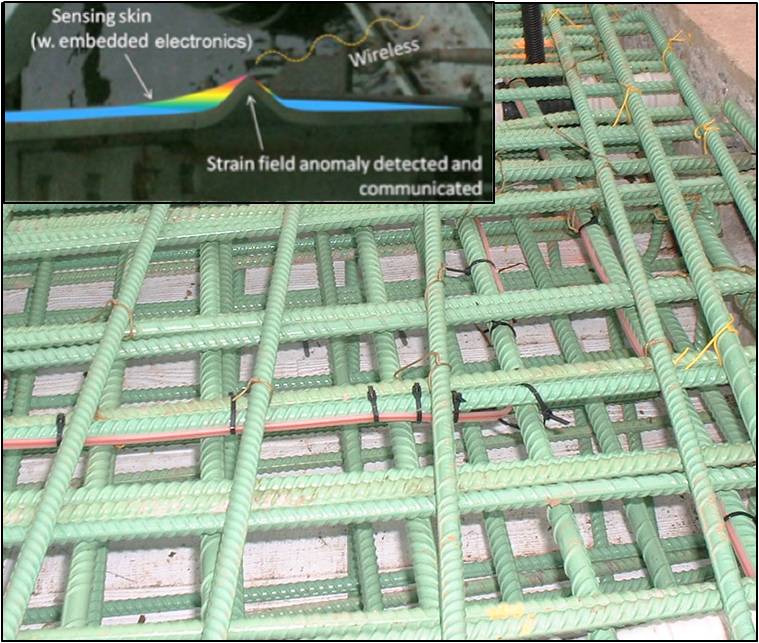 |
FIBER OPTIC SENSORS AND ADVANCED SENSING TECHNOLOGIES |
|
The standard monitoring practice is based on the choice of a reduced number of points, supposed to be representative of the structural behavior, and their instrumentation with discrete sensors. However, reliability of detection and characterization of damage that occurs in the locations far from the sensors is challenging, and depends on sophisticated algorithms which performance is often decreased due to various influences that may “mask” the damage, such as high temperature variations, load changes, and outliers and missing data. One possibility to overcome this challenge is the use of advanced sensors with higher spatial resolution, i.e. long-gauge sensors, truly distributed sensors (offers one-dimensional strain field monitoring), true sensing "skins" (offers two-dimensional strain field monitoring), or dense arrays of sensors (one- or two-dimensionally ordered). These sensors provide for direct damage detection, avoiding the use of sophisticated algorithms. Research and development of advanced sensors is performed at SHM lab in areas of fiber optic sensors (FOS) and large area electronics (LAE). The following projects are related to above listed topics: Streicker Bridge Monitoring, Pipelines Health Assessment, and Wayne Bridge (US202/NJ23) Monitoring. |
||
 |
SHM DATA MANAGEMENT |
|
Important part of SHM is related to collecting large amounts of data, and the proper management of this data is crucial for the success of SHM. Data management is often a "bottleneck" for SHM: bad data management has as a consequence inefficient exploitation of SHM and can even lead to abandon of SHM. SHM lab researches, develops, and implements algorithms and processes for data interpretation, visualization, and analysis, with aim to convert the SHM results into an understandable and actionable information about structural behavior and condition; three sub-areas of this research are system identification, damage detection, and data visualization. The research at SHM related to data management is focused real applications and deals with both static and dynamic data delivered in various formats. This area of research is in close relation with other areas of research performed at SHM lab. The following projects are related to above listed topics: Streicker Bridge Monitoring and The Learning Bridge (Tacony-Palmyra Bridge). |
||
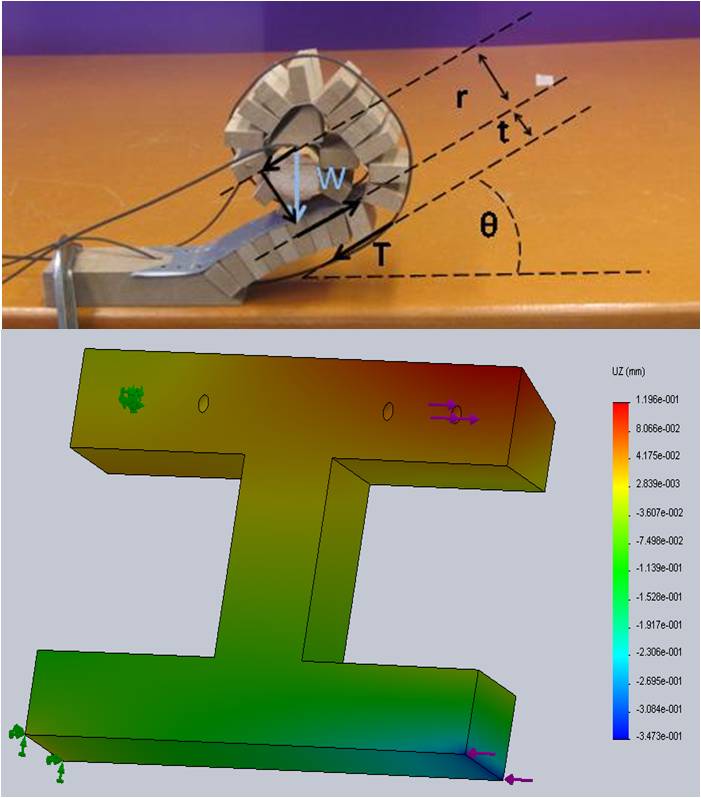 |
STRUCTURAL ANALYSIS AND SMART STRUCTURES |
|
True smart structure is provided not only with a monitoring system, but also with a system of actuators, which is able, based on input from the monitoring system, to redistribute the internal forces in the structure and adapt the structure to new conditions. The following project is related to above listed topics: Smart Deployable Bridge and Smart Mast.
|
||
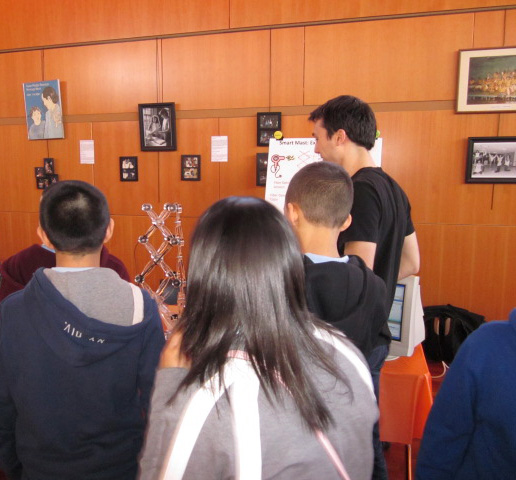 |
OUTREACH ACTIVITIES |
|
Streicker Bridge monitoring project is included in Green Tour Videos made by Student Environmental Communication Network (SECN) for the Office of Sustainability's Green Tour for the iPrinceton App. See the video here. SHMlab collaborates with IBM Research on the project, and intial results are presented in this video. Smart Mast developed by Structural Form Finding Lab and SHM Lab for outreach purposes and presented at various events (e.g. "Making stuff", "SEE Expo", etc.) can be seen here. The Learning Bridge (Tacony-Palmyra) was presented at "SHM in Action" event in the frame of 8th International Workshop on Structural Health Monitoring held at Stanford University in September 2011. See the presentation. Large Area Electronics based sensor won the first place at the seventh Innovation Forum. See the presentation. The preliminary tests gave birth to Smiley Jack, included in Art of Science Gallery 2011. See Smiley here.
|
||